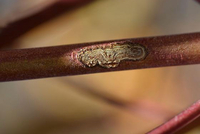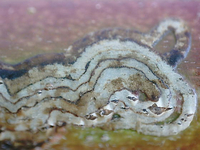« |
Home |  » » |
| View PDF | Gracillariidae Members: | Marmara Members: | 5 NC Records |
|---|
Marmara new species 10 - on Benthamidia and Swida (undescribed species) - No Common Name |
 view caption |  view caption |  view caption |  view caption |
Photo Gallery for Marmara new species 10 - on Benthamidia and Swida - No common name | Photos: 4 |